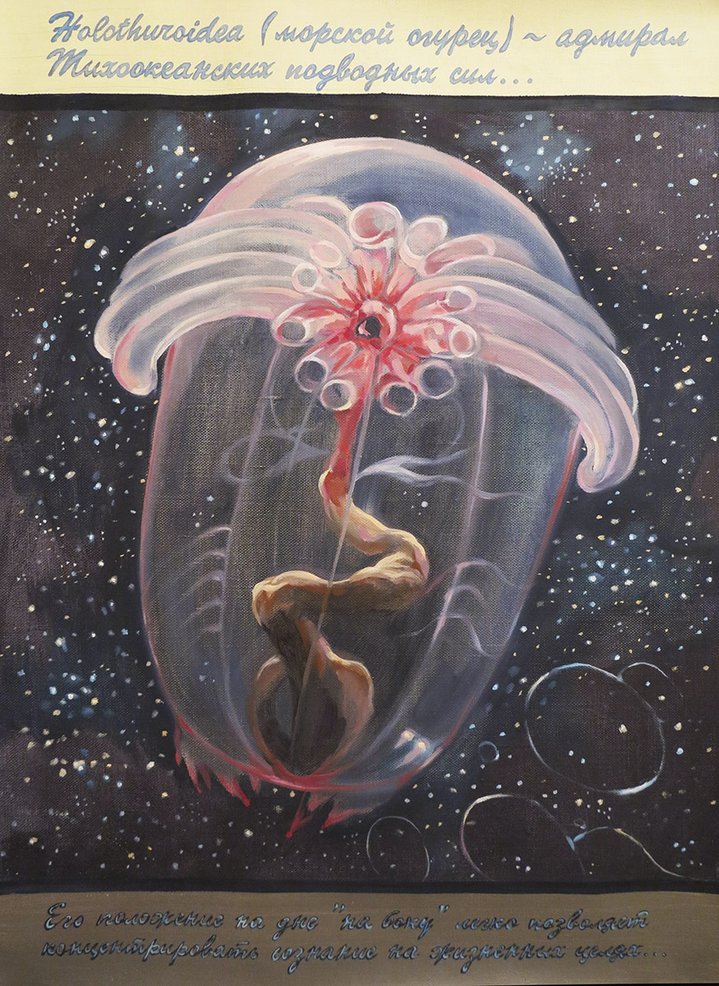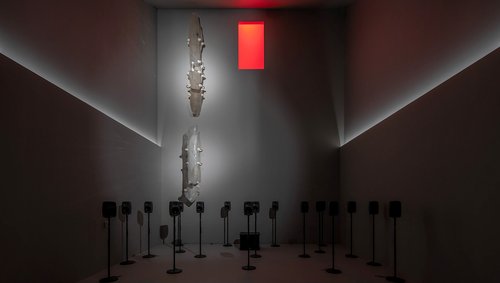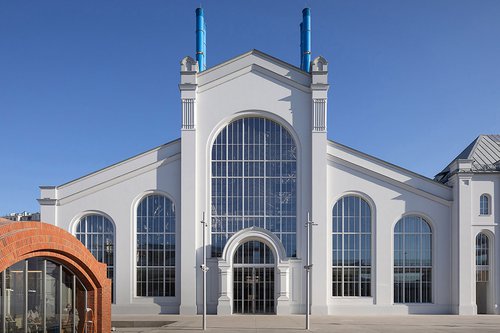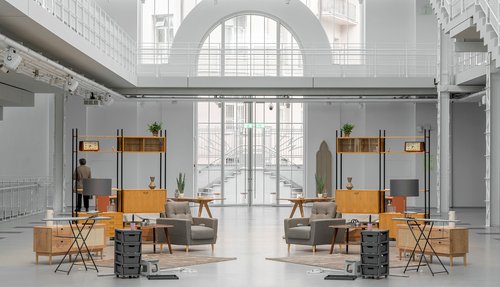Filling the Vacuum at GES-2

A view of the exhibition 'A Mind of One's Own'. GES-2 House of Culture, Moscow. 2023. Photo Daniil Annenkov
This former power plant in the centre of Moscow, reconstructed by Renzo Piano in 2021, was built to be a place for international dialogue in the arts but now has had to re-invent itself in a fast changing socio-political reality. New commissions for young Russian creatives as well as archives of established artists are helping to fill both the huge space and the spiritual vacuum.
Perfectly coordinated, a trio of new exhibitions have just opened at GES-2: ‘A Brief History of Absence’, ‘Cloud Storage’, and ‘Sorcerers’ (and to this mix was added ‘A Mind of One's Own’, which had been suspended since March and has now reopened). GES-2 is funded by the V-A-C Foundation whose founder Leonid Michelson, in 4th place on Forbes’ list of the richest people in Russia, is currently sanctioned by the Canadian government. There is no institutional theme combining all of these exhibitions, which is unsurprising because just last year GES-2 was forced to scrap its ambitious plan of programs that had included a large number of international artists. Initially the curators at GES-2, were at a loss when their plans fell through overnight and in response they came up with a staggering number of new projects which were then presented in early March 2023. Yet it was not ideas which were at the top of the agenda in the current climate, rather organisational and logistical considerations. For curators to source works for such a huge space there are now considerable challenges. For example, because work by Arkady Nasonov (b.1969), the protagonist of the exhibition ‘Cloud Storage’ is relatively easy to find, this project suddenly became a curatorial priority and this kind of practical thinking seemed to apply across all these three shows at GES-2.
It turned out to be a game of speed — who was first off the mark — and that fell to younger artists, who were more flexible and responsive. Works included in the shows by established artists were borrowed from private collections and in places it felt like a limited choice. And there was a sense that the works on show by emerging artists had just been made, or were existing works which were adapted for the project with a debatable level of success. The exhibition project ‘Sorcerers’ feels dwarfed by the vast spaces of GES-2. Curated by Anna Ilchenko and Andrey Parshikov it sets out with the etymology of the word ‘enchantment’ - magical divination using a cup - and indeed the architecture of the exhibition, designed by Elizaveta Sazonova, includes a hollow cylindrical construction – or chalice – which is placed in the middle of a square room. Here also, whether by chance or design, there is another esoteric motif played out with the ratio of the square and the circle. Crowded on the walls of the room are series of works by Mika Plutitskaya (b.1983) and Slava Nesterov (b.1989). The project by the former is about Alisa Selezneva, a time traveller in the Soviet film ‘Guest from the Future’ played by child actress Natalia Guseva, who became an idol for several generations; the artist looked like the actress in her youth. The work consists of a series of watercolour ‘self’portraits of Alice-Plutitskaya, which seem to be repetitive but are in fact slightly different. Darkened with oil to symbolically represent a fairy-tale forest, Nesterov has made wooden constructions which incorporate graphics, chains and other visual elements, created symmetrically, a harmony deliberately broken in some places. The obsessive repetition here feels reminiscent of ritual, in Plutitskaya perhaps some attempt to be a living goddess or in Nesterov the construction of a map of some mythical space.
The other three participants in the Sorcerers project all have their own idiosyncratic responses to the brief. Ruslan Polanin (b.1988) has three small sculptures under glass hoods set on high podiums, like idols from some kind of folk horrormovie. They are, however, somewhat lost against the background of a black and white mural by Nesterov covering the entire wall. This looks like a neural network constructed as an indecipherable mix of patterns taken from fairy tales. Works by Mikhail Maksimov (b.1974) and the artist double act of Nadezhda Bakhshieva and Anna Pospelova (b.1986) are placed inside the central ‘bowl’. Maksimov is known for his absurdist videos, which are heavily laced with game-dev logic and Russian dark folk aesthetics (ranging from motifs taken from Yuri Mamleev's books to the frightening entourage of suburban trains and small convenience stores). In his new work, ‘New Game Is Over’, the artist suggests intervening in the lives of three game worlds, setting them up in deliberately absurd registers, and literally intervening in the plot manually: there is a device next to the main screen, into which you must stick your hands, so that in the game they appear as skeleton limbs. With Bakhshieva and Pospelova absurdity also lies at the heart of their project: here we find an image of a Russian birch tree, a mermaid, binary notation, a work by Giuseppe Penone (b.1947), installed in a birch grove behind GES-2, with songs and dances.
On a much bigger scale, the exhibition ‘A Brief History of Absence’, curated by Andrey Vasilenko and Karen Sarkisov, issituated in a heterogeneous, winding space, with everything is carefully arranged. Contrary to the title, this show ispacked with art. You have to look for empty space here. Yet absence is created within the works. At one end, the show closes with the legendary opus ‘4'33’ by John Cage who is presented in the form of a grand piano and, at times, a silent performance, while on the opposite side there are projects by Moscow Conceptualists and St. Petersburg New Artists who – in different ways, but with a common outcome – turn art into a bureaucratic procrastination. Concepts go down the ladder according to levels of authority, comments on actions are sinking under new comments, the creative process itself gets drowned out by reports.
A work of 1983 by Andrei Filippov (1959–2022), consisting of a plywood hammer, taller than a human being, has a sign above it that says ‘Die’. It is on the one hand, rather obviously, a reference to Christian symbolism (a crucifix crowned with the acronym "INRI"), and on the other, a rejoinder or even an attack on the Soviet authorities, who at that time were very real and extremely repressive The government of the time, under Yuri Andropov, began actively imprisoning political dissidents and anyone who objected in general, or sending them into the army, as happened with some undeground artists. Filippov, fearless and uncompromising, turns a dangerous allegory into a violent marionette. Here, Ian Ginzburg (b. 1988) has created a three-panel installation about a little-known artist called Varis Khasanov (1941–2021). Absence is presented here not only in the form of the oblivion that befell the protagonist, but also his unreadable diaries, mentioned in a description, as well as his fascination for Tibet and Buddhism. The selection of objects, photographs and works by the artist says essentially nothing about Khasanov, but forms a twilight field in which the imagination can run wild. Characteristically, Ginzburg himself took his surname, his creative pseudonym, from a similarly half-forgotten artist, Joseph Ginzburg (1938–2015), to whom he has dedicated several projects.
A particularly outstanding project is a 20 minute video about the work of fictional artist Heidi Schneider. Behind her are several Russian artists who have repeatedly made exhibitions about her, turning her into their own alter egos. In the film, various characters go round and round commenting on Schneider's activities, yet on further reflection without saying anything specific. It looks like a Sergei Kuryokhin-style absurd speech (1954–1996), watchable with pleasure and a smile. Here Schneider's work is also included, notably the video of an animated bat which flies from Vienna to Moscow (in Google maps, of course), finding its way into Pripyat, which was abandoned after the Chernobyl nuclear plant catastrophe. This is a sight well worth seeing.
A Brief History of Absence
27 April – 1 September 2023
Sorcerers
27 April – 30 July 2023
Cloud Storage
27 April – 30 July 2023
A Mind of One's Own
27 April – 30 July 2023













